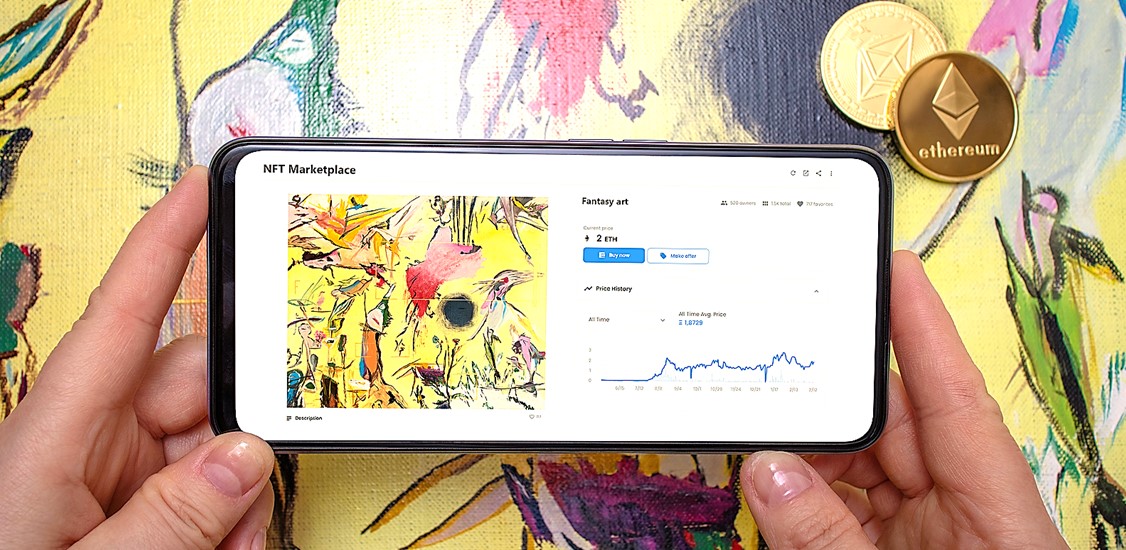Technologies
Services
Business
Devices


“100% based on greater fool theory”, said Microsoft co-founder Bill Gates in June this year, commenting on the trends surrounding cryptocurrencies and non-fungible tokens (NFTs). By August, headlines were full of the news that trading volumes on top NFT marketplace OpenSea had fallen by 99% since May – what Gates predicted had begun to unfold. Predictably, as soon as market environments cease to be conducive for speculation, trading volumes tend to drop drastically.
If the NFT industry expects mainstream adoption of its technologies, it will have to demonstrate how they can be deployed and implemented in real businesses and improve people’s lives, beyond just the hype and speculation.
The rise of NFTs in digital art has changed the way we collect, make and appreciate this form of art. However, for anyone considering to jump onto the NFT bandwagon, even just to wet one’s feet, it is important to understand that NFT technology is merely a digital documentation tool, much like a Word or PDF file, except with blockchain characteristics.
Although it is arguable that a digital image of a cryptopunk is art, it is undeniable that an NFT, with nothing more than a link to the digital image file, is not art. There are established, legally protected methods to acquire digital art. This is done through copyright acquisition or licensing. An article by Bitcoin.com on blockchain technology company Yuga Labs releasing IP rights to its NFTs raises three important issues pertaining to this:
NFT technology is merely a documentation tool. If someone were to print a link to a digital image on a Word file and sell this as art, they would be seriously misrepresenting what they are selling. The same should apply to an NFT.


SEC Chair Gensler was quoted saying that, “Crypto doesn’t need more guidance”, and although he was speaking in the context of securities laws, his view would hold true for all other assets, whether tangible or intangible, that exists in our world. No one would consider creating new laws or regulations to govern the sale and purchase of Word files or PDF files.
When we understand that NFT is merely a digital documentation tool, we immediately realise its potential as a technology that will enhance the way we document assets and trade them, but only if it is adopted correctly and responsibly. There was a time when the law struggled with the enforceability of digital documentation and admissibility of digital evidence. And today it will have to tackle digital documentation containing blockchain characteristics. However, just as digital documentation is here to stay, NFT technologies will also have a place in our modern world, but there is a need to demonstrate how they can be correctly and responsibly implemented.
In its existing form, without unequivocally articulating what it represents, the nature of an NFT and its terms and conditions will have to be determined by a regulator or a court based on evidence surrounding its sale to a purchaser and other circumstantial evidence. If NFTs are sold as an investment into an enterprise, it will not be surprising to see the SEC Chair classifying them as securities.
In a recent article, we learnt that the Singapore High Court has ruled that NFTs can be considered as property. In fact, every NFT, being a digital document, represents a bundle of rights, either unequivocally and expressly written into it or discovered through circumstantial evidence, including ancillary external documentation.
Digital ownership tokens (or DOTs) are an example of a responsible real world application of NFT technologies. Every DOT contains legally binding and enforceable documentation that legally protects the ownership of an asset (whether tangible or intangible) with specificity.


Any asset that wishes to take advantage of blockchain characteristics, such as a distributed ledger, decentralization, transparency, relative immutability, and automatic settlement via smart contracts, can be tokenised with a DOT to enjoy their benefits.
The laws and regulations governing each DOT will then depend on the asset that has been tokenised. If such asset is a security, then securities laws and regulations will govern it. If the asset is intellectual property, then intellectual property laws and regulations will govern it. There is no room for ambiguity or speculation.
Where existing assets are already registered with a government or regulatory body accompanied with laws and regulations providing that the ownership specified in the relevant register will be final, then any conflict will necessarily be resolved in favour of such laws and regulations. Hence the tokenization of such assets will require relevant professional expertise to make it work.
NFT technologies are useful, and are here to stay. NFT technologies can be used for tangible and intangible assets, and are expected to flourish in art, music, games and even financial assets. As a digital documentation tool, there is no need for new laws and regulations to govern NFTs. Instead, existing laws and regulations should be applied to them by requiring them to unequivocally articulate what asset they represent and the terms and conditions that govern such assets.
Julian is the Group CEO of XBE, a group of metaverse, blockchain and NFT technology companies. Julian has more than 15 years of experience in the finance industry in Hong Kong, Singapore and Tokyo. Julian obtained his legal qualifications in Singapore, Hong Kong and the United Kingdom and specialised in banking, securitisation, and derivatives law in Singapore and Hong Kong.
PREVIOUS POST
NEWSLETTER
Get updates and alerts
delivered to your inbox



NEWSLETTER
Get updates and alerts
delivered to your inbox


COPYRIGHT © 2022 THE FAST MODE


